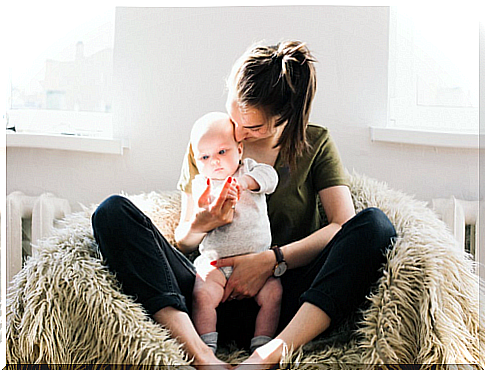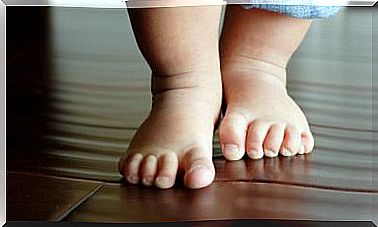What To Do If The Baby Chokes On Milk?

When we are mothers for the first time, everything becomes huge for us. Our son’s crying scares us and the slightest presence of fever makes us think of the worst. One of the things that scares us most is not knowing what to do if the baby chokes on milk. In this article, we are going to talk about the causes and solutions of this inconvenience.
As mothers, our responsibility is infinite. We do the best we can (and we know how) and, in the case of being a first-time mother, feelings are amplified. When any unforeseen event that could be dangerous occurs, we must act with coolness and integrity.
If we get hysterical, we won’t solve anything. It is true that, at certain times, remaining calm is practically impossible. But we have to try, for our sake and our son’s.
Fear can neutralize any attempt to help a baby who is suffocating. You should think about it and be aware that you are the baby’s protector.

What to do if the baby chokes on milk?
Quickly place the baby on his stomach. Lightly pat the back with the palm of your hand as this will make you cough. It is very common for such a young child to choke on liquid, especially if he is not drinking in the correct position.
If, on the other hand, the baby chokes on something solid, you must perform the Heimlich Maneuver. If you still cannot resolve the situation, call 911 as soon as you can. It is very important that you have all the possible numbers of help available in case something happens.
It is much better to err on the side of precaution than on irresponsibility. Don’t feel guilty if your baby ever chokes on milk: it can happen to anyone, including adults. How many times do we choke on a glass of water?!
Why does my baby choke on milk?
If the baby chokes on milk, it could be due to multiple factors. Some have to do with us and others with the newborn’s body. In any case, if it happens frequently, it is advisable to talk to your pediatrician. No one better than him to advise us what to do.
When the problem is external
It may be that the flow of breast milk is very strong and, when sucking, it directly reaches the baby’s throat. This is solved by adjusting the milk duct outlet or extracting just before breastfeeding.
If the baby is already bottle-feeding, the liquid can come out too quickly for him. At first, many children cannot manage the new flow properly. However, this ends up being resolved with patience and with the necessary time.

When the problem is internal
Some babies may have internal problems related to swallowing or gastroesophageal reflux (the return of gastric contents to the mouth). To find out if this is due to this and not issues related to milk or breastfeeding, it is advisable to consult a specialist.
If you want to keep your baby from choking, try placing him in a prone position. Try not to let him sleep in a horizontal position after nursing, but vertically. So if he suffers from reflux and chokes, he may cough or vomit and there is no risk of choking.
Likewise, don’t even think about letting him feed himself from the bottle. You should wait until you’re a little older and be sure it won’t happen again. Try to keep the crib in your room for at least the first 6 or 7 months. That way you can control it much better.
Gags at this stage are quite common. You can talk to any woman who has ever been a mother. It’s a more normal situation than you think! Babies are very vulnerable beings and they need some help to learn to move in the world.
You shouldn’t feel distressed by this phase. Before long, your child will be able to eat and drink on his own, and you will no longer be afraid that something bad will happen to him. Until then, try to stay alert and follow these recommendations so that you don’t get more than an unnecessary scare!









